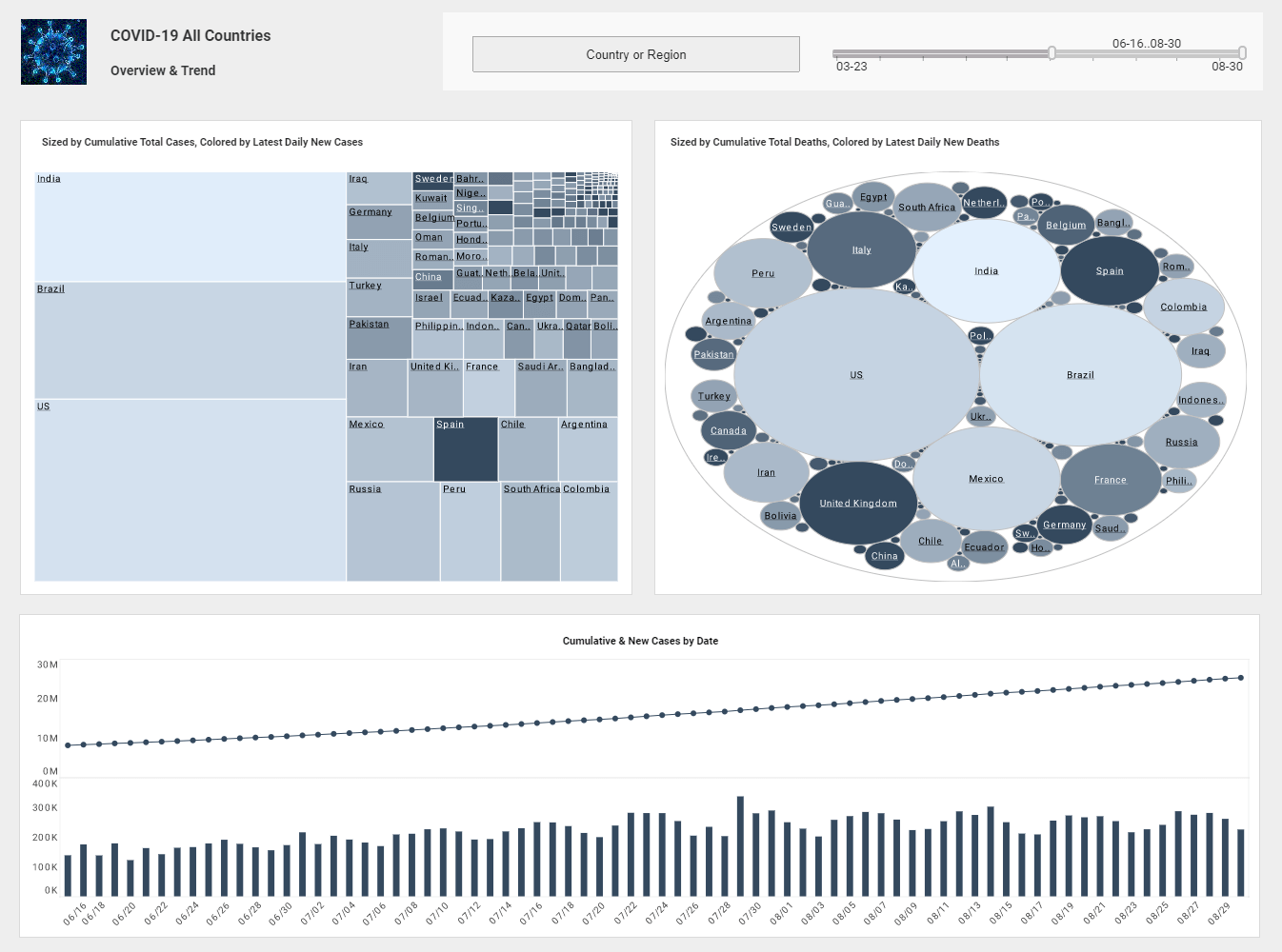Why Do Companies Need Analytics?
This is the continuation of the transcript of a Webinar hosted by InetSoft on the topic of "How to Implement Business Analytics." The speaker is Abhishek Gupta, product manager at InetSoft.
Let’s start with a simple question of why? Why is it that companies need analytics? What is it that’s driving the urgency? The answer to that question is really closely tied to some of the main trends that we talked about before in terms of data users and time.
So at the top of the list once we get once again we see data. Companies feel that all too often their most critical decisions are based on data that they have little faith in, either because it’s inaccurate, it’s dirty, it’s incomplete or sometimes just too fragmented or siloed within different departments. As we see with the third pressure on the chart here, the pressure also becomes evident from that business user perspective, that tactical or operational level.
Companies struggle with getting the visibility they need into their key processes and then understanding what it all means. They look at analytics to help really sift through that operational data to produce insights that can help improve those processes. And lastly, we again see the urgency for analytics.
A common reason why companies implement analytics, well it’s because people are clamoring for it. And not always technical people, line of business decision makers across many areas of the company again are raising their hands and asking for that better and deeper analytical capability.
| #1 Ranking: Read how InetSoft was rated #1 for user adoption in G2's user survey-based index | Read More |
Sea of Big Data
So on this next slide here I wanted to put a little bit more meat around this concept of data growth and what we are calling this Sea of Big Data. One thing that we have noticed is not only is data growing, but the rate at which data is growing is also increasing both in terms of a volume and complexity. So if you look at simply the volume of data that companies use to fuel their various analyses, this is the question that we’ve been asking for quite some time now that annual growth rate has risen from under 30% to well over 50% in the span of about three years.
Over that same time period, we see substantial growth in disparity as well something else as the number of unique discrete data sources the companies draw from in order to create that insight. On an average basis looking at all company sizes we’ve seen that number of data sources essentially double over the span of three years from 14 to just under 30. So as companies automate more of their manual systems and generate more electronic data, they now have an even wider and often times challenging array of sources to pull from. These two factors are really a major part of the urgency around Big Data and more pointedly cause more and more headaches for organization these days.
So as we think about that growing sea of data, a natural question to ask is what are the activities and tools that will help us manage that growth and isolate the kinds of data that we need to produce insight. For top performing companies the answer to that question really falls into two different categories: internal capabilities and technology enablers. The chart on the left shows the sampling of some of the capabilities that top companies use to better manage data and unsurprisingly they both relate back to people.
Learn how InetSoft's data intelligence technology is central to delivering efficient business intelligence. |
Strong Analytical Culture Leads To Best Performance
The best performing companies are more likely to report a stronger analytical culture, one that sees value in the timely analysis of relevant data in order to support major decisions as opposed to those that just run largely on gut feel. Also the best run companies are more likely to employ what’s frequently referred to as a data scientist, someone dedicated to the data that understands not only how to manage and improve the cleanliness, usability, and accessibility of data, but someone who also understands statistical modeling, and in some cases how to make the data more relevant to business decision makers.
Then on the technology side, top companies are more likely to be using business intelligence tools to help accelerate their path to insight in the right hands. In memory analytical tools can be a powerful way of running queries and models against very, very large volumes of data, doing so in an abbreviated timeframe. Similarly, the concept of real time decision making is predicated upon efficiency with data really at every step of the analytical process.
And we saw this in the last slide how much disparity companies see in their data environments. The ability to make real time decisions based on pulling data from multiple sources really depends on the ability to aggregate or integrate that data in real time as well. And we see leading companies are much more likely to have that capability as well.
| Previous: How to Implement Business Analytics | Next: Navigating the Sea of Big Data |



